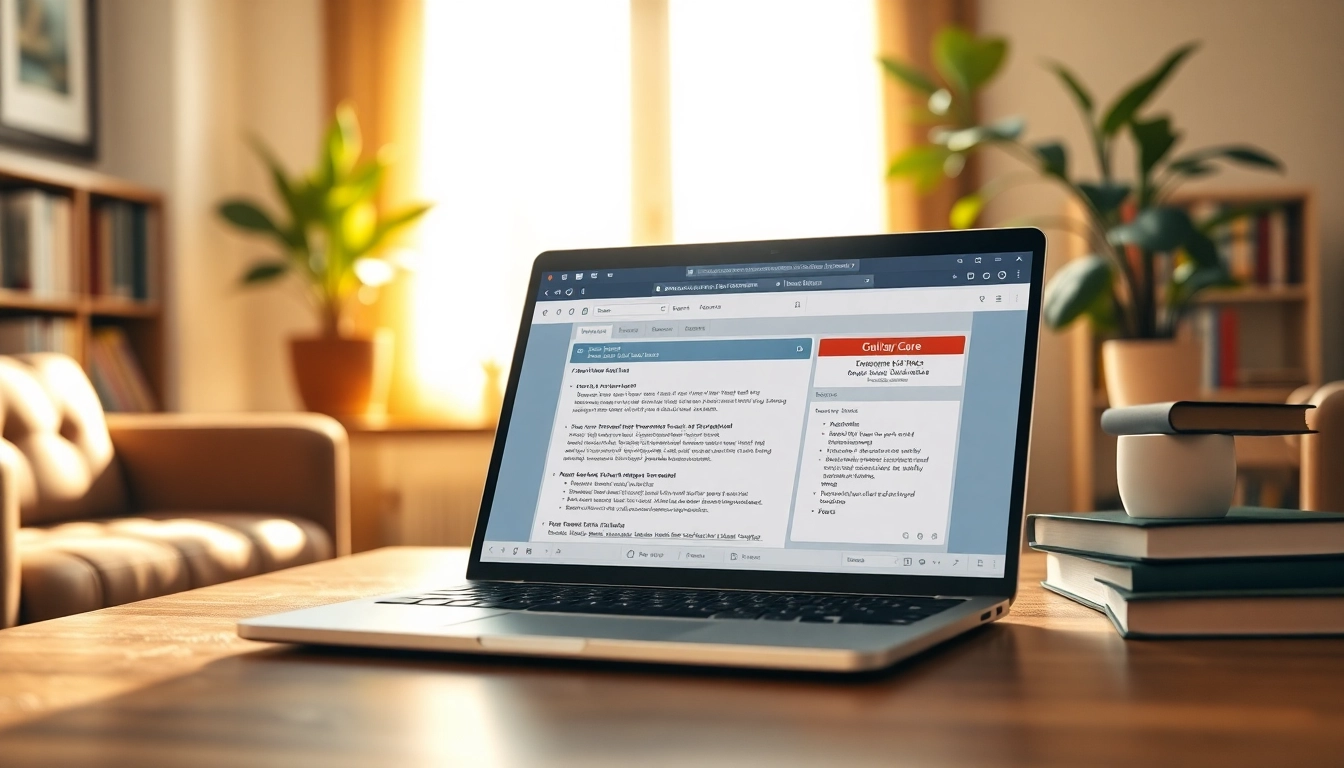Understanding Plagiarism Detectors
What is a Plagiarism Detector?
A plagiarism detector is a software tool designed to identify instances of plagiarism within a text. These tools compare the content against a vast database of existing sources, including academic papers, articles, and online content, to determine the originality of the writing. They are essential in educational and professional settings, ensuring that the work presented is unique, properly cited, and adheres to standards of academic integrity. A reliable plagiarism detector not only highlights copied or closely paraphrased material but also provides a percentage of text that is original versus plagiarized.
How Do Plagiarism Detectors Work?
Plagiarism detectors operate through a multi-step process that involves scanning the submitted text, indexing its content, and then comparing that content against known sources. The basic working mechanism includes:
- Text Input: Users upload their documents or paste text into the plagiarism checker.
- Fingerprinting: The software breaks down the text into smaller components, such as phrases or sentences.
- Database Comparison: The text components are compared to a vast database of academic papers, publications, and online content.
- Reporting: After analyzing the content, the tool generates a report that indicates the percentage of originality, highlighted matches, and possible sources of plagiarism.
The Importance of Using a Plagiarism Detector
Using a plagiarism detector is crucial in various contexts, primarily to uphold academic integrity. Here’s why they are essential:
- Promoting Originality: These tools help maintain originality in academic and professional writing, allowing authors to express their ideas without mirroring someone else’s work.
- Avoiding Consequences: In educational institutions, plagiarism can lead to severe consequences, including expulsion. Using a detector can prevent unintentional plagiarism.
- Improving Writing Skills: By identifying areas where the content closely resembles other works, writers can learn to paraphrase or cite sources correctly.
Features to Look for in a Plagiarism Detector
Accuracy and Coverage
The effectiveness of a plagiarism detector largely depends on its accuracy and the extent of its coverage. Look for detectors that:
- Utilize extensive databases that include academic publications, journals, and online articles.
- Provide detailed reports with links to original sources to enhance transparency.
- Implement sophisticated algorithms that can detect even paraphrased content effectively.
User-Friendly Interface
A user-friendly interface is crucial for ease of use, especially for those who may not be technologically savvy. The detector should feature:
- Simple navigation with intuitive controls that allow users to upload documents and access reports effortlessly.
- Clear presentation of results, including highlighted sections of text that require attention.
Integration with Other Tools
For professionals and scholars who rely on multiple writing and editing tools, integration capabilities are a must. A good plagiarism detector can:
- Integrate seamlessly with word processors and content management systems.
- Offer API access for advanced users who want to include plagiarism checking in their applications.
Comparing Top Plagiarism Detectors
Cost-Effective Options
When selecting a plagiarism detector, cost should be considered, but balance it with functionality:
- Free options like DupliChecker and Grammarly offer basic services, but premium plans often provide enhanced features.
- Subscription-based services like Turnitin and Scribbr are widely used in educational institutions for their comprehensive features.
Free vs. Paid Plagiarism Detectors
Free plagiarism detectors can be beneficial for basic checks, but they often have limitations. Here’s a comparison:
| Feature | Free Detectors | Paid Detectors |
|---|---|---|
| Database Size | Limited | Extensive |
| Accuracy | Moderate | High |
| Reporting | Basic | Detailed |
| Customer Support | Limited | Comprehensive |
Customer Reviews and Experiences
Reviews from actual users can provide insights into the effectiveness of different plagiarism detectors. Look for feedback on:
- User interface and usability
- Support and customer service quality
- Accuracy of the results and reporting style
Steps to Use a Plagiarism Detector Effectively
Preparing Your Document
Before using a plagiarism detector, ensure your document is ready for submission. This includes:
- Formatting your text appropriately, as some detectors may misinterpret formatting errors.
- Ensuring that all references and citations are included.
Running the Plagiarism Check
When running the check, follow these steps:
- Select the appropriate plagiarism detector based on your needs.
- Upload your document or copy and paste the text into the tool.
- Click to initiate the scan and wait for the report.
Interpreting the Results
Once the results are available, it is important to interpret them carefully:
- Look at the overall percentage of originality provided by the detector.
- Review the highlighted passages, noting which sources were cited as similar or matching.
- Determine necessary edits or citations based on the results.
Addressing Common Concerns about Plagiarism Detection
Are Plagiarism Detectors Accurate?
While plagiarism detectors are highly accurate, no software is infallible. Factors that may affect accuracy include:
- The breadth of the database being compared against;
- Complexity of the text and paraphrasing involved;
- The ability of the software to recognize variations in language and structure.
What to Do if Plagiarism is Detected
If plagiarism is flagged, take the following steps:
- Examine the highlighted sections to understand the matching content.
- Revise the text to add original content or proper citations.
- Re-run the document through the plagiarism detector to ensure all issues have been resolved.
Maintaining Academic Integrity
To maintain academic integrity, it is essential to:
- Regularly use plagiarism detectors to ensure your writing meets originality standards.
- Understand citation styles and how to properly credit sources.
- Encourage discussions about academic integrity within educational environments.
